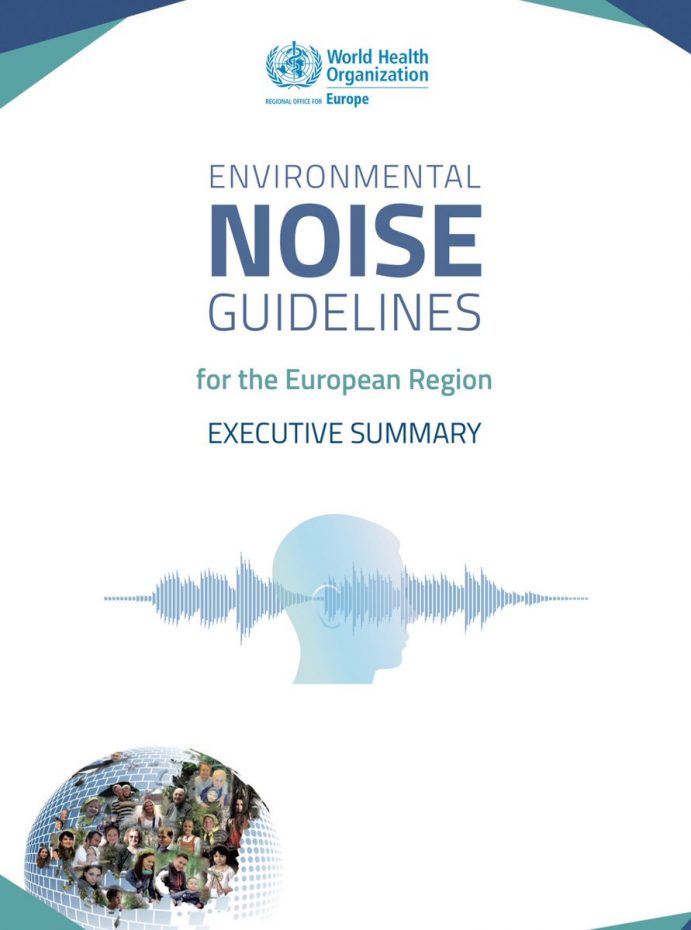The just released WHO Environmental Noise Guidelines for the European Region provide strong evidence that noise is one of the top environmental hazards to both physical and mental health and well-being in the European Region.
Noise is one of the top environmental hazards to both physical and mental health and well-being in the European Region
Officially launched to countries and stakeholders in Basel, Switzerland on 10 October 2018, the document identifies levels at which noise has significant health impacts and recommends actions to reduce exposure.
For the first time, a comprehensive and rigorous methodological framework was applied to develop the recommendations.
“Noise pollution in our towns and cities is increasing, blighting the lives of many European citizens. More than a nuisance, excessive noise is a health risk – contributing to cardiovascular diseases, for example. We need to act on the many sources of noise pollution – from motorized vehicles to loud nightclubs and concerts – to protect our health,” says Dr Zsuzsanna Jakab,
WHO Regional Director for Europe. “The new WHO guidelines define exposure levels to noise that should not be exceeded to minimize adverse health effects and we urge European policy-makers to make good use of this guidance for the benefit of all Europeans.”
What is new
Compared to previous WHO guidelines on noise, this version contains five significant developments:
- stronger evidence of the cardiovascular and metabolic effects of environmental noise;
- inclusion of new noise sources, namely wind turbine noise and leisure noise, in addition to noise from transportation (aircraft, rail and road traffic);
- use of a standardized approach to assess the evidence;
- a systematic review of evidence, defining the relationship between noise exposure and risk of adverse health outcomes;
- use of long-term average noise exposure indicators to better predict adverse health outcomes.
Driving policy action to protect communities from health effects of noise
Targeted at decision-makers and technical experts, the new guidelines aim to support legislation and policy-making at local, national and international level.
«The Environmental Noise Guidelines contribute to the 2030 Agenda for Sustainable Development and support our vision of creating resilient communities and supportive environments in the Region»
“Through their potential to influence urban, transport and energy policies, the Environmental Noise Guidelines contribute to the 2030 Agenda for Sustainable Development and support our vision of creating resilient communities and supportive environments in the Region,” continues Dr Jakab.
Although the guidelines focus on the European Region and provide guidance consistent with the European Union’s Environmental Noise Directive, they also have global relevance.
The large body of evidence underpinning the recommendations was derived not only from noise effect studies in Europe but also from research in other parts of the world, mainly America, Asia and Australia.
Furthermore, the guidelines highlight data and research gaps to be addressed in future studies.

An independent peer-reviewed development process
The development process of the current guidelines was conducted by two independent groups of experts from the environmental noise community who adhered to a new, rigorous, evidence-based methodology.
“They aim to support public health policy that will protect communities from the adverse effects of noise, as well as stimulate further research into the health effects of different types of noise.”
Eight peer-reviewed systematic reviews of the pertinent literature underpin the guidelines, incorporating significant research since the publication of the WHO Night Noise Guidelines for Europe in 2009.
The systematic reviews were based on several health outcomes – cardiovascular and metabolic effects, annoyance, effects on sleep, cognitive impairment, hearing impairment and tinnitus, adverse birth outcomes, and quality of life, mental health and well-being – and the effectiveness of interventions in reducing noise exposure and negative health impacts.
“These guidelines have been developed based on the growing body of evidence in the field of environmental noise research,” concludes Professor Stephen Stansfeld, Chair of the Guidelines Development Group. “They aim to support public health policy that will protect communities from the adverse effects of noise, as well as stimulate further research into the health effects of different types of noise.”














